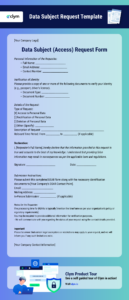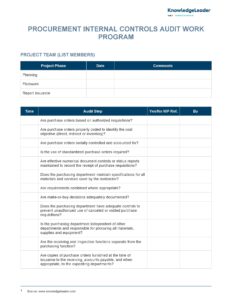Maintaining detailed records offers several advantages. It strengthens accountability by clearly demonstrating how an organization responds to requests. This organized approach streamlines the process of fulfilling requests and minimizes the risk of errors or delays. Furthermore, it helps demonstrate compliance during audits and provides valuable data for internal analysis and process improvement.
This foundational understanding of structured documentation for data requests paves the way for deeper exploration of topics such as implementing such a system, integrating it with existing workflows, and adapting it to specific regulatory requirements. Further discussion will cover best practices for data handling, security considerations, and strategies for optimizing the process to enhance efficiency and compliance.
Key Components of a Data Subject Request Log
Effective management of data subject requests necessitates a structured logging system. The following components are crucial for a comprehensive and compliant log.
1: Requester Information: Accurate identification of the requester is essential. This typically includes full name, contact details, and any identifier used to verify their identity.
2: Request Date and Time: Precise recording of when the request was received is vital for tracking timelines and ensuring timely responses.
3: Nature of Request: Clear categorization of the request type, specifying whether it is for access, rectification, erasure, restriction of processing, or data portability.
4: Data Description: Specific details regarding the data requested, enabling efficient retrieval and processing. This might include data categories, date ranges, or specific file names.
5: Response Provided: Documentation of actions taken in response to the request, including confirmation of actions, any data provided, or reasons for refusal.
6: Date of Response: Recording the date the response was provided demonstrates compliance with response deadlines and facilitates performance analysis.
7: Communication Logs: Maintaining a record of all communications with the requester, including emails, letters, or phone calls, ensures transparency and provides context.
8: Internal Notes: Space for internal notes allows for tracking of progress, recording decisions, or highlighting specific challenges related to the request.
A well-structured log, incorporating these elements, provides a robust framework for managing data subject requests, ensuring compliance, and promoting operational efficiency.
How to Create a Subject Access Request Log Template
Establishing a standardized template for documenting subject access requests is crucial for efficient management and regulatory compliance. The following steps outline a practical approach to creating such a template.
1: Define Required Fields: Determine the essential information to capture for each request. This typically includes requester identification, request date, nature of the request, data description, response details, and communication logs.
2: Select a Format: Choose a suitable format for the template, such as a spreadsheet, database, or dedicated software. Consider factors like accessibility, searchability, and data security.
3: Design the Layout: Structure the template logically, grouping related information and ensuring clear labeling of fields. Prioritize clarity and ease of use for those responsible for data entry and retrieval.
4: Implement Data Validation: Incorporate data validation rules to ensure data accuracy and consistency. This might include mandatory fields, date formats, or dropdown lists for specific categories.
5: Establish Access Controls: Define clear access permissions to ensure data security and confidentiality. Restrict access to authorized personnel only.
6: Integrate with Existing Workflows: Align the template with existing data protection processes. Consider how the log will be used for reporting, audits, and ongoing compliance efforts.
7: Train Relevant Personnel: Provide comprehensive training to all personnel involved in handling subject access requests. Ensure they understand how to use the template effectively and maintain data accuracy.
8: Regularly Review and Update: Periodically review and update the template to reflect changes in regulations, internal policies, or best practices. This ensures ongoing effectiveness and relevance.
A well-designed template, combined with appropriate training and procedures, streamlines the management of subject access requests, reduces the risk of errors, and facilitates compliance with data protection regulations.
Standardized documentation through a dedicated template provides a structured approach to managing data subject requests, ensuring compliance, and fostering operational efficiency. Key elements include capturing comprehensive requester information, precise request details, and a clear record of actions taken. Utilizing such a framework enables organizations to demonstrate accountability, streamline processes, and minimize risks associated with data handling. Effective implementation requires careful planning, staff training, and regular review to adapt to evolving regulatory landscapes and organizational needs.
The diligent implementation and maintenance of robust logging procedures are not merely a matter of compliance but a fundamental aspect of responsible data governance. This proactive approach strengthens data protection efforts, builds trust with data subjects, and contributes to a more transparent and accountable data ecosystem. Organizations must prioritize these practices to navigate the complexities of data privacy regulations and uphold the rights of individuals.


